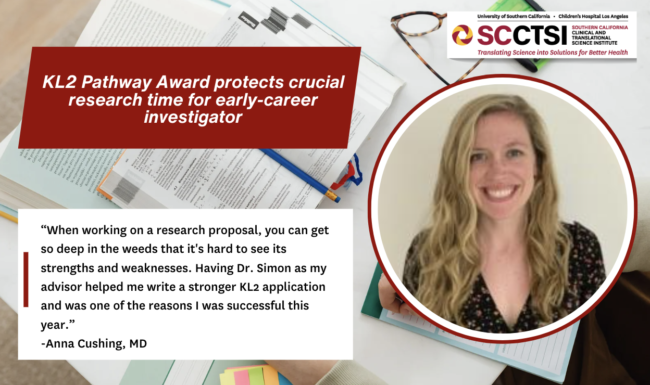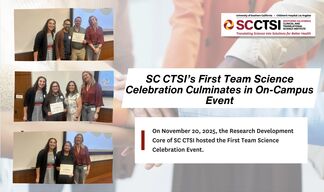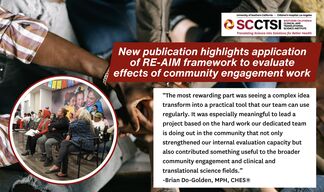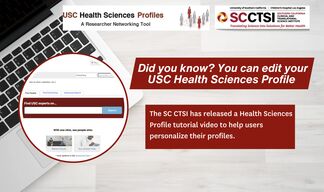KL2 Pathway Award protects crucial research time for early-career investigator
Clinician-scientist benefits from one-year program to help CHLA researchers launch research careers
Anna Cushing, MD, is advancing toward becoming an independent investigator, thanks to a career-building award from the KL2 Pathway program.
In April 2023, Cushing received the inaugural KL2 Pathway award from the Children’s Hospital Los Angeles (CHLA). This one-year award provides 60% FTE-protected research time for early-career clinician-scientists. The program is open only to participants based at CHLA who have applied for the three-year KL2 Mentored Career Development award from the Southern California Clinical and Translational Science Institute (SC CTSI).
The KL2 award has a rigorous application and interview process with just four openings in each year’s cohort.
“When you’re working full time as a clinician, it’s hard to find time to build up your research career,” said Cushing, an attending physician in the Division of Emergency and Transport Medicine at CHLA and Assistant Professor of Clinical Pediatrics in the Keck School of Medicine of the University of Southern California. “Since starting on the KL2 Pathway award, I’ve been able to grow more quickly as a researcher.”
The KL2 Pathway Program offers participants a possible bridge to a future KL2 award, which not only protects research hours but also offers resources to conduct multidisciplinary clinical studies in a team-based setting.
Cushing, the highest-scoring, unfunded researcher in the 2023 KL2 cohort, found success in the Pathway program. Subsequently, she was awarded a coveted spot in the 2024 KL2 program.

“The Pathway Program is a way to bolster the early careers of folks at CHLA who are looking to launch their research careers,” said Tamara Simon, MD, MSPH, FAAP. She is the CHLA site Principal Investigator for SC CTSI and Professor of Pediatrics (Clinician-Scholar) with the Keck School of Medicine of USC. “We were very excited to have Dr. Cushing as our first pathway awardee because she has been doing important work, and we wanted to see her momentum continue.”
Pathway participants are encouraged to demonstrate their research productivity, such as publishing papers and preparing either another KL2 or a K award submission. They pursue funding mechanisms such as federal, foundation or other extramural career development awards.
The protected time during her pathway year allowed Cushing to get involved in different research groups and projects related to her work, helping her to build her network and research portfolio.
Cushing participates in CHLA’s existing Research Success Teams (RST) effort for clinician-scientists, which offers 20 to 25 didactic sessions, works-in-progress sessions and grant writing support. As a member of the pathway program, Cushing became eligible to join Research Success Teams Plus (RST+), a newer CHLA program that gives individualized senior mentorship support for those with greater than 50% protected time for research. Simon was Cushing’s assigned senior mentor, in addition to her robust mentoring team.
“I found it beneficial to have an experienced researcher at our institution provide objective advice,” Cushing said. “When working on a research proposal, you can get so deep in the weeds that it's hard to see its strengths and weaknesses. Having Dr. Simon as my advisor helped me write a stronger KL2 application and was one of the reasons I was successful this year.”
For her KL2 project, Cushing is developing a predictive model enriched with Natural Language Processing (NLP)—a cutting-edge AI tool—to identify children at risk for suicide-related emergency department revisits. Nearly one in five children with a suicide-related emergency department visit will make a suicide attempt within 18 months.
The predictive model incorporates clinical data and geocoded neighborhood social determinants of health data using patients’ addresses. The model crucially incorporates AI-analyzed narrative clinical notes. These unstructured notes include information about children’s psychiatric, family and social histories, potentially providing insight on high-risk markers.
Cushing will conduct a retrospective cohort study of mental health emergency department visits at CHLA for children aged 6 to 17 from 2014 to 2023. She will compare the predictive model performance with and without use of NLP.
In addition, Dr. Cushing’s team will perform a retrospective case-control study of a sample of children 6 to 17 years with mental health emergency department visits from 2014 to 2023 at Harbor-UCLA, a County-run general hospital. They will test whether the model data derived from a children’s hospital population can accurately identify children at risk for suicide-related emergency department revisits in a general hospital setting.
Someday, an NLP-enriched model could help clinicians predict which children are at the highest risk and would benefit from additional interventions after their emergency department visit.
“We need better tools to help us identify the highest-risk patients for more targeted interventions,” Cushing added. “High-risk patients may benefit from more high touch care coordination after their emergency department visit. Or from bridge mental health care programs where we provide short-term services as they wait for longer-term care.”



